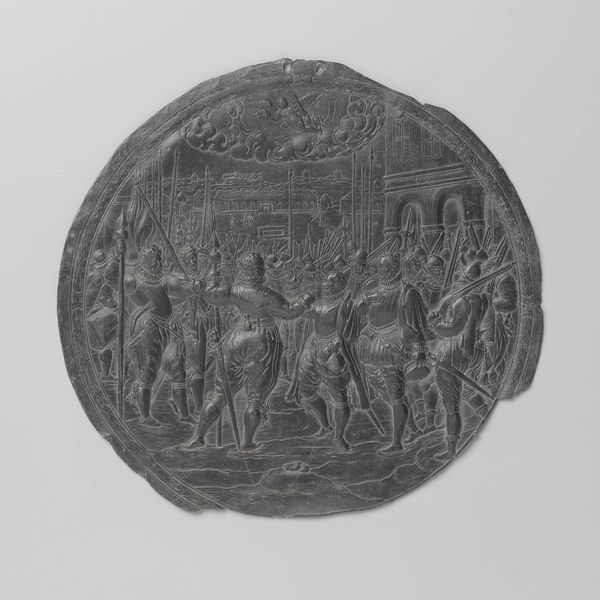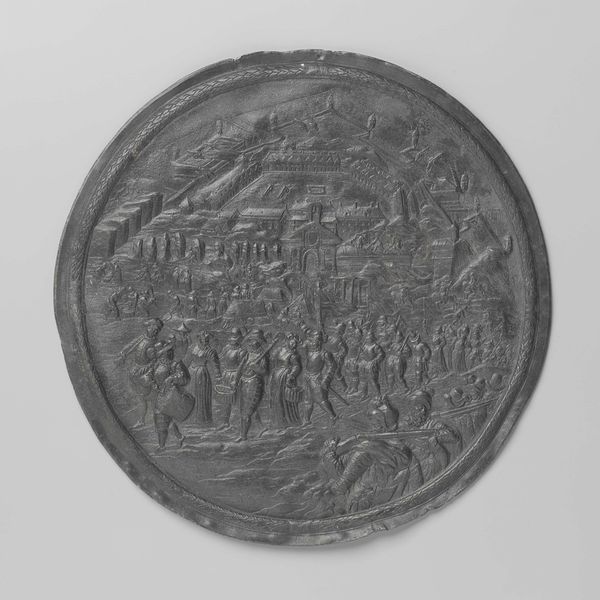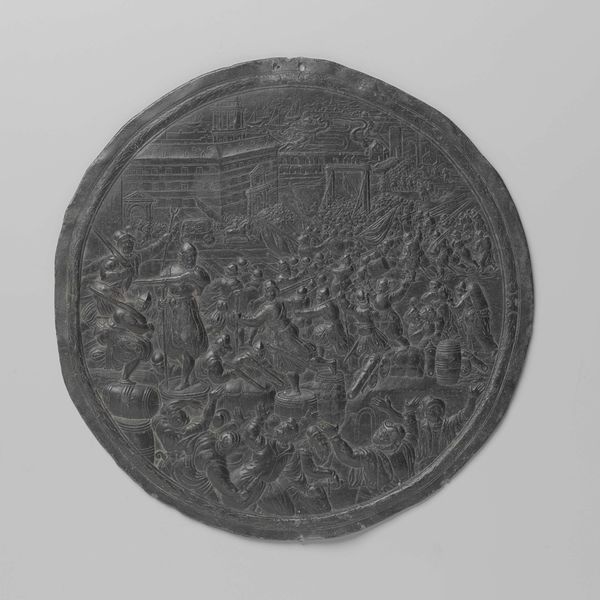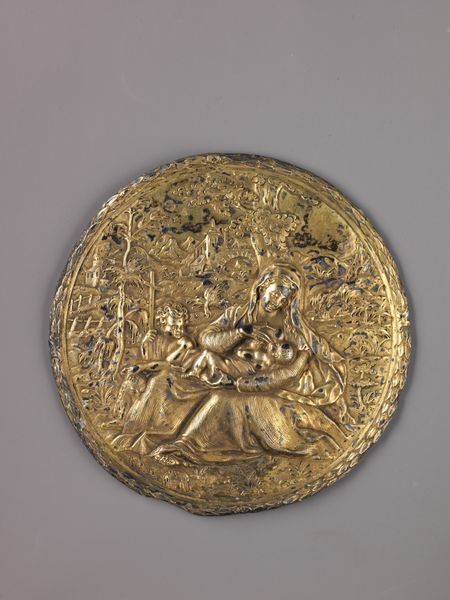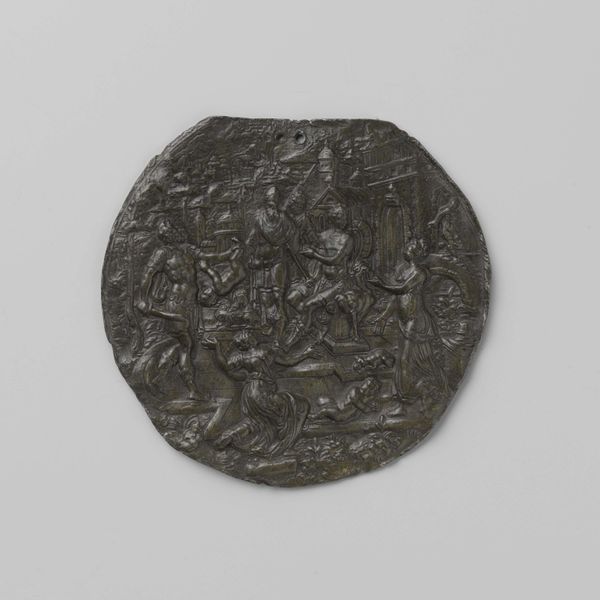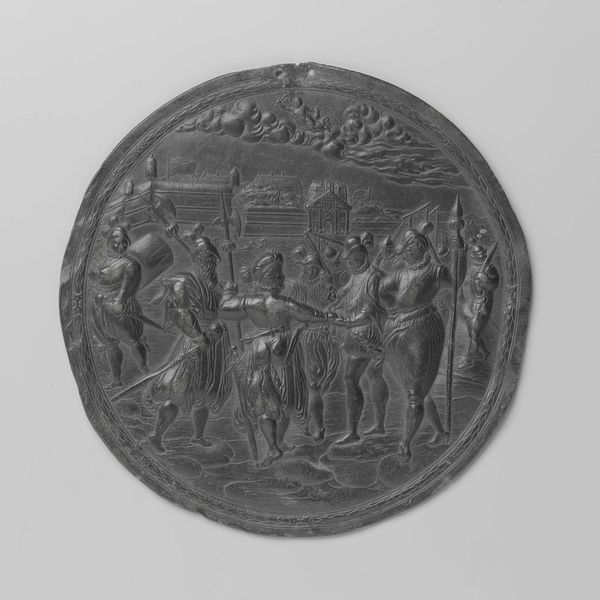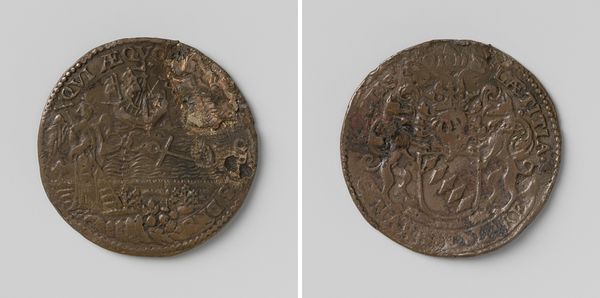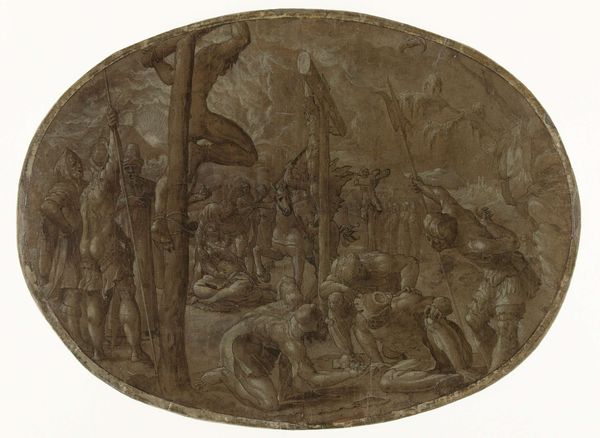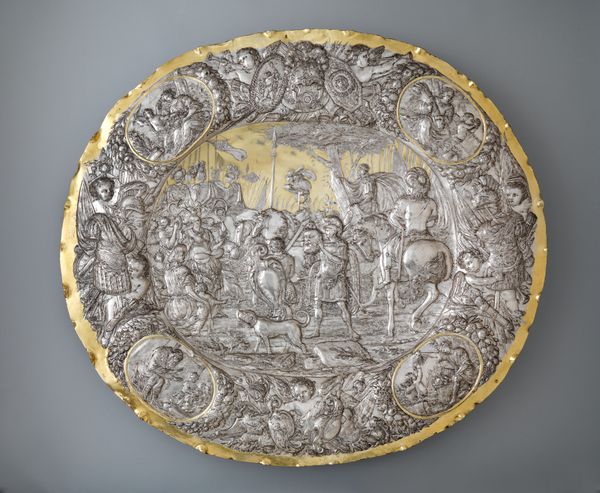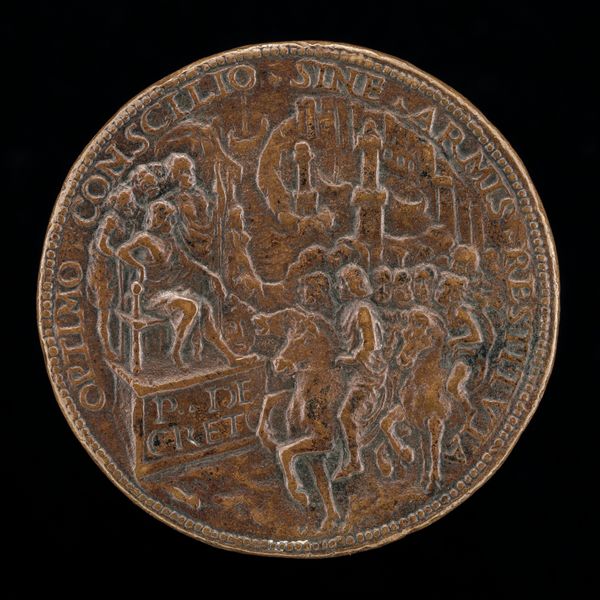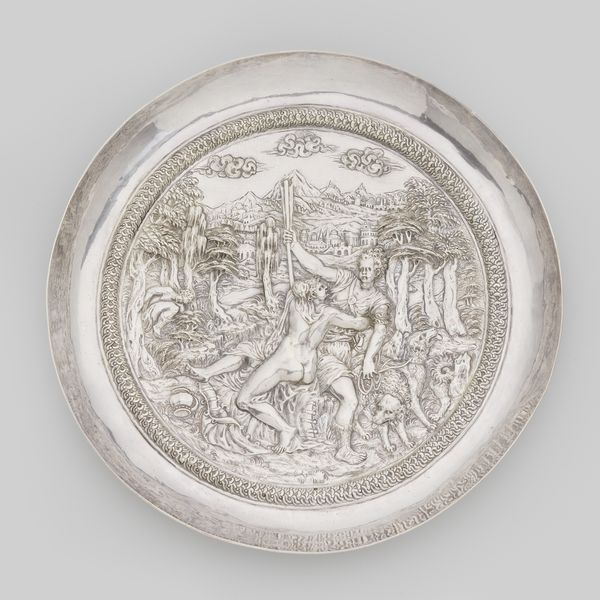
metal, relief, sculpture
#
narrative-art
#
metal
#
stone
#
sculpture
#
relief
#
figuration
#
sculpture
#
history-painting
#
academic-art
Dimensions: diameter 19 cm, depth 2.5 cm
Copyright: Rijks Museum: Open Domain
Editor: This intriguing metal relief, dating back to 1865, commemorates the Battle of Waterloo. The anonymous artist has created such a detailed scene in this circular plaquette! It really gives you the sense of a momentous historical event immortalized in metal. What key symbolic components stand out to you in this work? Curator: The overriding element here is the cultural memory associated with Waterloo. Look how the artist clusters the figures, almost overwhelming the viewer with the density of the conflict. Notice the positioning of the key leaders - Wellington, Blucher, and Orange - around the perimeter. Each name is etched in large letters, yet they circle the scene. It suggests not only their prominence but also hints at a more complex, cyclical, interpretation of victory. Consider what images remain, in collective memory, of Napoleon. He isn't present; rather the artist emphasized the leaders that took part in his defeat. Editor: That’s fascinating. So it’s less about a straightforward celebration and more about grappling with what that victory meant for European identity? Curator: Precisely! And look at the imagery at the very top: the memorial and motto – "et God my voor Nederlandt" – which translates as "And God for my Netherlands", framed with Laurel. It speaks to an invoking of divine favour, a return to stability, while also acting as a sort of symbolic national brand. The composition places God, and then Nation, as an endorsement and capstone over conflict. Consider this object was made 50 years after the war - why memorialize it? Why *this* way? What emotions and memories are being endorsed, suppressed, or manipulated? Editor: I see what you mean. It’s not just a record of history, it’s a carefully constructed interpretation through very deliberate symbolic framing. Curator: Exactly. This object provides an emotional vocabulary regarding nationhood. And though in a small scale, this sculpture serves as a grand and persuasive declaration. Editor: That’s a powerful insight, reframing how I see these historical commemorations.
Comments
No comments
Be the first to comment and join the conversation on the ultimate creative platform.
